Comprehensive Guide to Construction Waste Clearance in Forest Gate
Understanding Construction Waste

Construction waste refers to any debris generated during the building, renovation, or demolition of structures. Managing this waste efficiently is crucial for environmental sustainability and maintaining the aesthetic appeal of areas like Forest Gate.
In Forest Gate, effective construction waste clearance not only keeps the neighborhood clean but also supports local recycling efforts and reduces the strain on landfills.
Proper waste management practices can lead to significant cost savings for construction companies and homeowners alike.
Types of Construction Waste
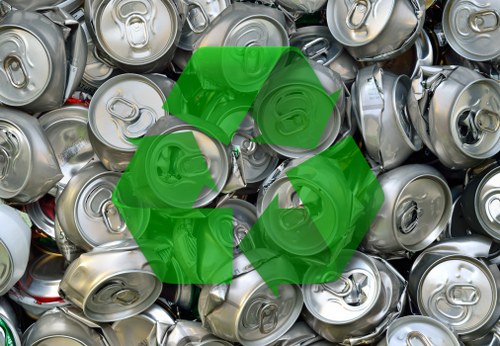
Construction waste can be broadly categorized into several types:
- Concrete: Remnants from foundations, sidewalks, and other concrete structures.
- Wood: Timber, plywood, and scrap wood pieces.
- Metals: Steel beams, wires, and other metal components.
- Drywall: Sheets used for interior walls and ceilings.
- Plastics: PVC pipes, insulation, and packaging materials.
Each type requires specific disposal methods to ensure minimal environmental impact.
Importance of Waste Clearance in Forest Gate
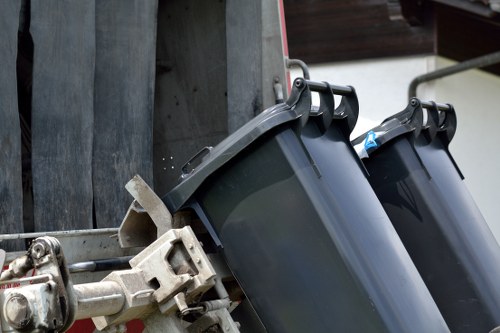
Forest Gate is a vibrant community, and maintaining its cleanliness is essential for several reasons:
- Environmental Protection: Proper waste clearance prevents pollution and promotes recycling.
- Aesthetic Appeal: A clean environment enhances the visual appeal of Forest Gate.
- Health and Safety: Removing debris reduces hazards and potential health risks associated with construction waste.
- Regulatory Compliance: Adhering to local waste management regulations avoids legal issues.
Investing in effective waste clearance services ensures these benefits are consistently realized.
Steps for Effective Construction Waste Clearance
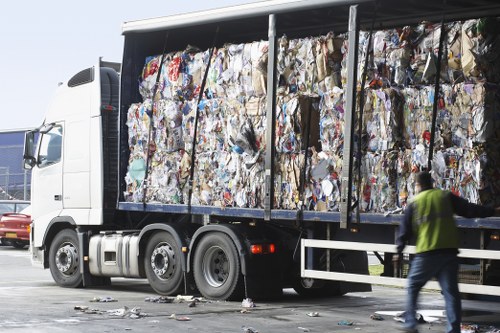
Implementing an efficient waste clearance process involves several key steps:
- Assessment: Evaluate the types and volumes of waste generated.
- Segregation: Separate recyclable materials from non-recyclables.
- Collection: Organize timely removal of waste from the construction site.
- Transportation: Move waste to designated recycling centers or disposal facilities.
- Disposal: Ensure proper disposal methods are employed for different waste types.
Following these steps ensures a streamlined and compliant waste management process.
Choosing the Right Waste Clearance Service

Selecting a reliable waste clearance service in Forest Gate is essential for successful waste management. Consider the following factors:
- Experience: Look for companies with a proven track record in construction waste clearance.
- Services Offered: Ensure they provide comprehensive services, including recycling and disposal.
- Compliance: Verify that the service adheres to local regulations and environmental standards.
- Pricing: Compare rates to find a service that offers value without compromising quality.
- Customer Reviews: Check testimonials to gauge customer satisfaction and reliability.
Choosing the right service ensures efficiency and peace of mind throughout your project.
Benefits of Professional Waste Clearance
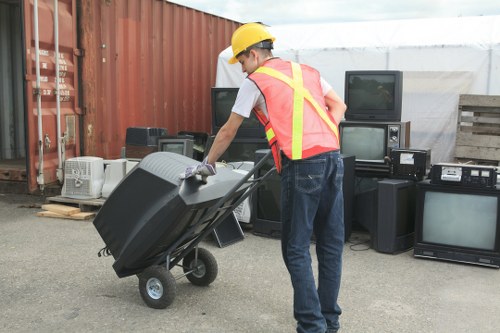
Engaging professional waste clearance services offers numerous advantages:
- Time-Saving: Professionals handle all aspects of waste management, allowing you to focus on your project.
- Expertise: Experienced teams ensure waste is managed according to best practices.
- Safety: Proper handling reduces the risk of accidents and health hazards.
- Cost-Effective: Efficient waste management can lower overall project costs by minimizing delays and optimizing disposal methods.
- Environmental Responsibility: Professionals prioritize recycling and sustainable practices, contributing to a greener Forest Gate.
These benefits make professional waste clearance a valuable investment for any construction project.
Recycling and Sustainability

Recycling is a cornerstone of sustainable construction waste management. In Forest Gate, recycling initiatives focus on repurposing materials such as:
- Metal Recycling: Recovered steel and aluminum can be reused in new construction projects.
- Wood Recycling: Salvaged timber can be repurposed for various applications.
- Concrete Recycling: Broken concrete is crushed and reused as aggregate in new concrete mixtures.
- Plastic Recycling: PVC and other plastics are processed for reuse in different industries.
Promoting recycling not only reduces waste but also conserves natural resources and lowers greenhouse gas emissions.
Regulatory Framework in Forest Gate

Forest Gate adheres to stringent waste management regulations to ensure environmental protection and public safety. Key aspects include:
- Permits and Licensing: Waste clearance services must obtain the necessary permits to operate legally.
- Waste Segregation Laws: Regulations mandate the separation of recyclable and non-recyclable materials.
- Disposal Standards: Specific guidelines dictate how different types of waste should be disposed of to minimize environmental impact.
- Reporting Requirements: Companies are required to maintain records of waste management activities and report them to relevant authorities.
Complying with these regulations is essential for maintaining Forest Gate's environmental standards.
Innovative Technologies in Waste Clearance
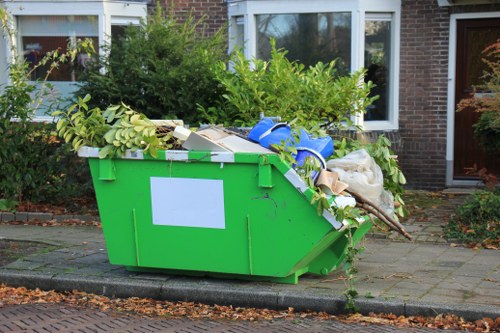
Advancements in technology have significantly improved construction waste clearance processes. Notable innovations include:
- Automated Sorting Systems: These systems enhance the efficiency and accuracy of waste segregation.
- GPS Tracking: Ensures timely and optimized routing for waste transportation.
- Recycling Machinery: Modern equipment enables the processing of a wider range of materials.
- Data Management Software: Facilitates monitoring and reporting of waste management activities.
- Eco-friendly Disposal Methods: Technologies that reduce emissions and energy consumption in waste processing.
Integrating these technologies can lead to more effective and sustainable waste clearance practices in Forest Gate.
Cost Factors in Waste Clearance
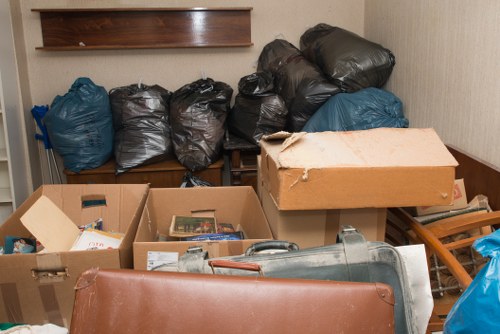
The cost of construction waste clearance in Forest Gate depends on various factors:
- Volume of Waste: Larger volumes typically incur higher costs.
- Type of Waste: Hazardous or non-recyclable materials may require specialized handling, increasing expenses.
- Frequency of Clearance: Regular clearance services might offer discounted rates.
- Distance to Disposal Sites: Proximity to recycling centers can influence transportation costs.
- Additional Services: Extra services like on-site sorting or temporary storage can affect pricing.
Understanding these cost factors helps in budgeting and selecting an appropriate waste clearance service.
Environmental Impact of Improper Waste Management
[IMG_11]Neglecting proper construction waste clearance can have severe environmental consequences:
- Pollution: Waste materials can contaminate soil and water sources.
- Wildlife Disruption: Debris can harm local wildlife and disrupt natural habitats.
- Increased Greenhouse Gases: Decomposition of organic waste in landfills contributes to carbon emissions.
- Resource Depletion: Failing to recycle leads to unnecessary extraction of raw materials.
- Aesthetic Degradation: Accumulation of waste diminishes the visual appeal of Forest Gate.
Ensuring proper waste management is vital for preserving the environment and the community's well-being.
Role of the Community in Waste Management
[IMG_12]Community involvement plays a pivotal role in effective construction waste clearance:
- Awareness Programs: Educating residents and builders about waste management best practices.
- Participation in Recycling Initiatives: Encouraging community members to engage in local recycling programs.
- Reporting Issues: Promptly informing authorities about improper waste disposal.
- Support for Local Services: Utilizing and advocating for reliable waste clearance services in Forest Gate.
A collaborative effort between residents, businesses, and service providers enhances overall waste management effectiveness.
Future Trends in Construction Waste Clearance
[IMG_13]The landscape of construction waste management is evolving, with several trends shaping its future:
- Circular Economy: Emphasizing the reuse and recycling of materials to minimize waste.
- Green Building Practices: Integrating sustainable materials and methods that produce less waste.
- Smart Waste Management: Utilizing IoT and AI to optimize waste collection and processing.
- Biodegradable Materials: Developing materials that decompose naturally, reducing landfill burdens.
- Enhanced Recycling Technologies: Innovations that allow for recycling of more complex materials.
Staying abreast of these trends ensures that Forest Gate remains at the forefront of sustainable construction waste management.
Best Practices for Construction Waste Clearance
[IMG_14]Adopting best practices ensures efficient and effective waste clearance:
- Early Planning: Integrate waste management strategies into the project planning phase.
- Regular Monitoring: Continuously assess waste generation and management throughout the project.
- Employee Training: Educate workers on proper waste handling and segregation techniques.
- Collaborate with Experts: Partner with experienced waste clearance services for optimal outcomes.
- Continuous Improvement: Regularly review and refine waste management processes.
Implementing these practices leads to sustainable and efficient construction waste management in Forest Gate.
Case Studies: Successful Waste Clearance Projects
[IMG_15]Examining successful waste clearance projects provides valuable insights:
- Project A: A residential complex in Forest Gate achieved a 70% recycling rate through meticulous waste segregation and collaboration with local recycling facilities.
- Project B: An office building renovation minimized landfill waste by reusing materials like steel beams and timber, significantly reducing costs.
- Project C: A community center construction utilized innovative technologies for waste sorting, enhancing efficiency and sustainability.
These case studies demonstrate the effectiveness of strategic waste management in diverse construction projects.
Challenges in Construction Waste Clearance
[IMG_16]Despite advancements, several challenges persist in construction waste management:
- Cost Constraints: Budget limitations can impede the implementation of comprehensive waste management strategies.
- Lack of Awareness: Insufficient knowledge about proper waste handling practices.
- Regulatory Hurdles: Navigating complex regulations can be daunting for service providers.
- Logistical Issues: Coordinating waste collection and transportation efficiently.
- Market Limitations: Limited demand for certain recycled materials affects profitability.
Addressing these challenges requires collaborative efforts and innovative solutions.
Tips for Minimizing Construction Waste
[IMG_17]Proactive measures can significantly reduce the amount of waste generated:
- Accurate Planning: Estimate material requirements precisely to prevent excess.
- Modular Construction: Use prefabricated components to minimize on-site waste.
- Material Selection: Choose materials that are recyclable or have minimal environmental impact.
- Efficient Design: Design structures that optimize material usage.
- Regular Audits: Conduct waste audits to identify and rectify inefficiencies.
Implementing these tips fosters a sustainable approach to construction waste management in Forest Gate.
Conclusion
[IMG_18]Effective construction waste clearance in Forest Gate is essential for environmental sustainability, community well-being, and regulatory compliance. By understanding the types of waste, choosing the right services, and adopting best practices, stakeholders can ensure a cleaner and greener Forest Gate.
Embracing recycling and innovative technologies further enhances waste management efforts, positioning Forest Gate as a model for sustainable urban development.
Don't wait! Contact us today to ensure your construction project in Forest Gate adheres to the highest waste management standards.